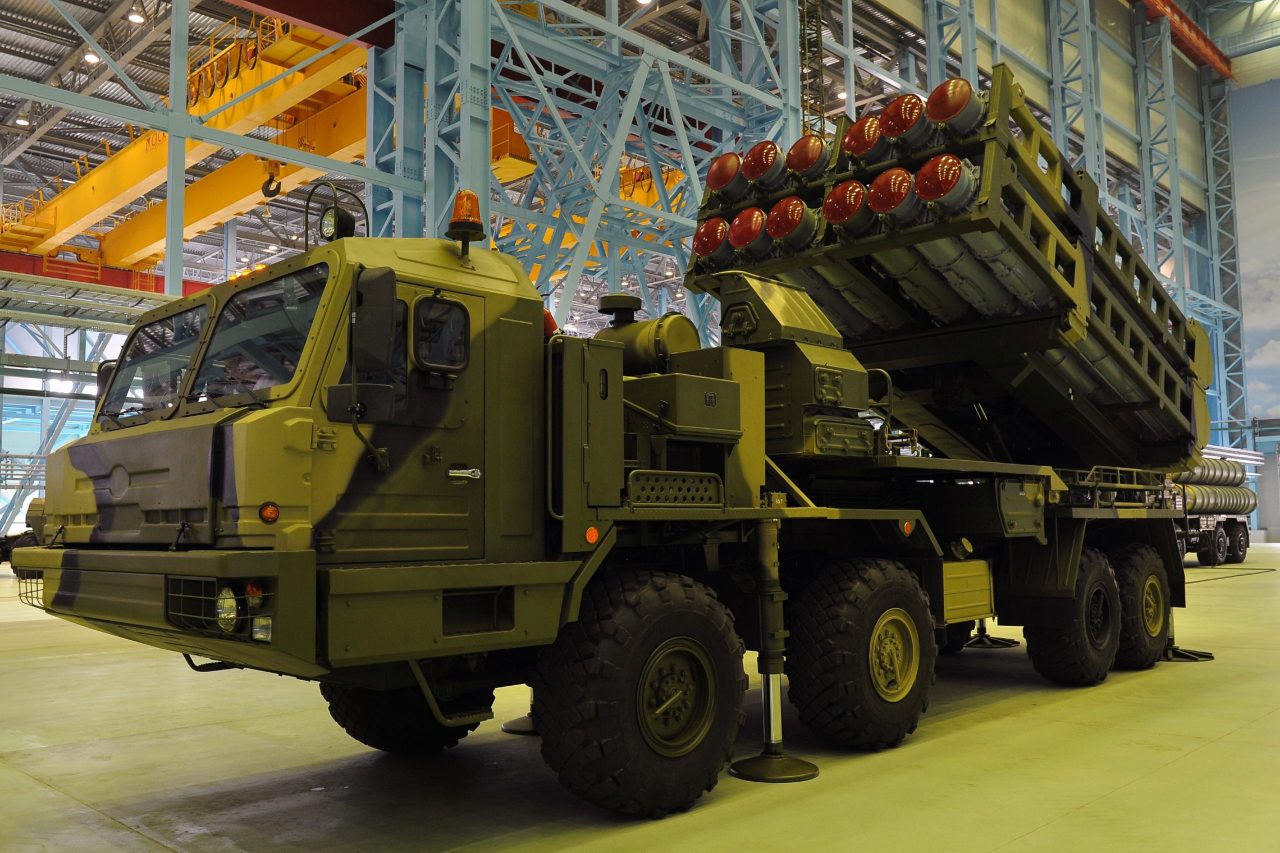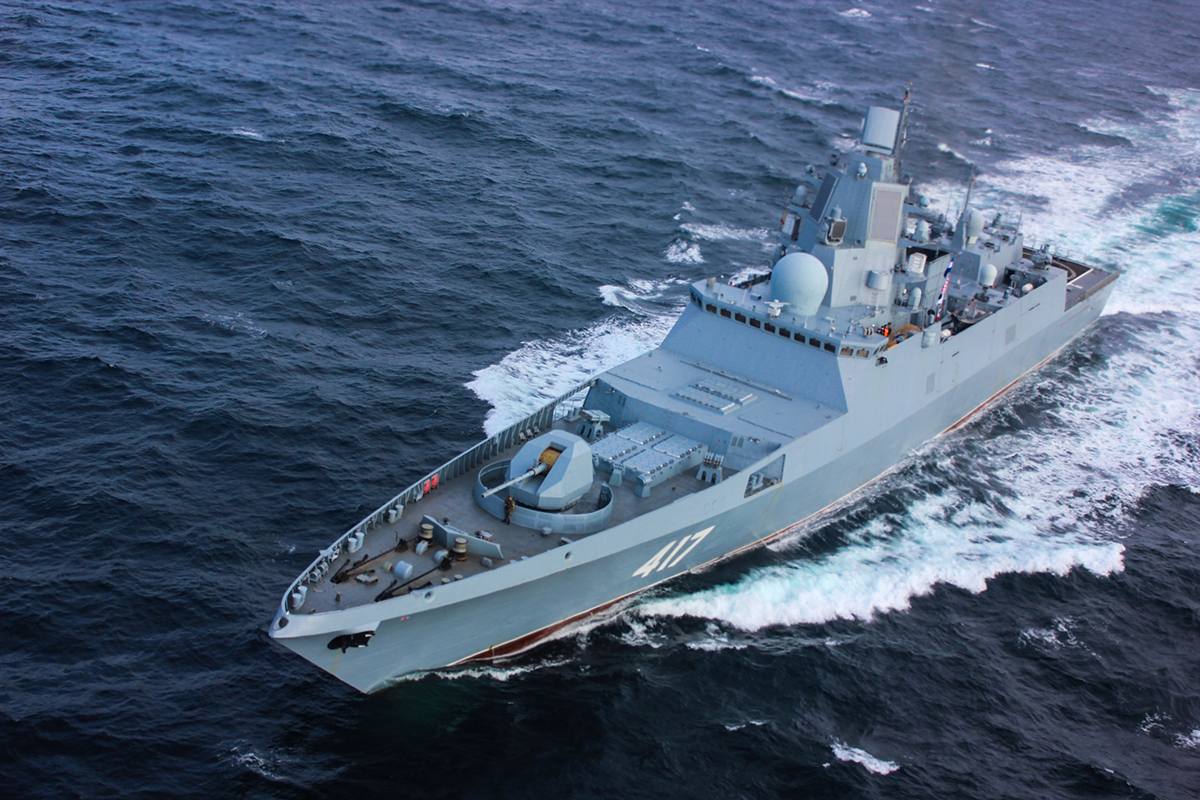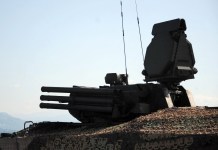On November 23, 2022, the Russian frigate Admiral Gorshkov successfully tested its S-350 Redut air defense (AD) system against sea targets in the Baltic Sea. The crew of Admiral Gorshkov, a Project 22350 M frigate of the Northern Fleet, hit a small ship with two anti-aircraft missiles.
According to the Press Service of the Baltic Fleet, “Rocket firing was carried out in a difficult jamming environment with the use of electronic countermeasures by a mock enemy.”
Also, to check the guidance systems of air defense systems and radio equipment of the frigate, combat aircraft of the naval aviation of the Baltic Fleet flew around the ship, the press service specified.
S-350 Redut AD System
The S-350 Redut is the naval variant of the Russian S-350 Vityaz Medium Range AD system. Besides Admiral Gorshkov, three other Russian Navy ships currently feature the S-350 Redut, all being corvettes.

The S-350 AD system entered service in February 2020 and replaced the S-300 system.
Surface Attack Capability
The medium (120 kilometers) range capability of both the S-350 Vityaz and the S-350 Redut AD systems are built around the 9M96E2 missile, which incidentally is also a component of the S-400 system.
The 9M96E2 features active radar homing, a critical capability required in a surface-to-air missile for a surface attack. The 9M96E2 features a speed of 1800 m/s and a 24-kilogram warhead.
In the surface attack mode, the high speed of the 9M96E2 gives it good destructive ability despite the modest warhead. This is perhaps why Gorshkov fired a two-missile salvo at the target.
It’s interesting to note that the US has modified its RIM-156A semi-active guidance surface-to-air missile of SM-2 system, featured on USN ships, for use against surface targets by fitting the active homing seeker of its AIM-120C air-to-air missile. The modified missile, known as SM-6, has a 64-kilogram warhead and a speed of 1200 m/s.
Pros & Cons of Using AD Systems For Surface Attack
Because of the small warhead fitted, the surface attack capability of AD missiles is limited and effective only against small, non-hardened targets.
AD missiles are far less lethal than anti-shipping missiles with heavier warheads and can strike low on a ship’s hull in sea skimming terminal homing mode.
In contrast, AD missiles can only hit on the deck. As such, they can superficially damage a ship but not sink it.
However, AD missiles are difficult to intercept because of their smaller size (radar signature), higher speed, and near ballistic terminal trajectory.
Russian Navy’s Innovative Approach To Air Defense
The versatility of AD missiles with surface attack capability is undeniable despite their limited destructive ability. They can effectively disrupt the operations of small adversary ships and boats.
It’s interesting how Russia equips its corvettes and frigates with capable medium-range AD systems while also allowing them to engage small surface crafts.
Fitting S-350 Redut systems on small ships allow competent medium-range AD systems to be quickly repositioned at different points along the coastline, depending on threat perceptions.
]The AD ships can additionally guard against intrusions by small manned or unmanned surface crafts. The capability is critical for Russia in the context of the threat to Crimea from Ukraine, which has used small sea crafts and drones to attack the island peninsula. Also, the approach is cost-effective in the context of the vast Russian coastline.

Indian Navy Could Benefit From Russia
Like Russia, India has vulnerable island territories to protect and a vast coastline. India has developed its LR-SAM system for Naval Ships with Israeli help.
The 70-kilometer range missile features an active radar seeker facilitating modification for a surface attack role. However, LR-SAM systems are only fitted on large Indian Navy (IN) ships.
The IN has plans to acquire seven locally built Next Generation Corvettes (NGCs). As per the QRs, the NGC will feature an AD missile system capable of providing 360-degree Anti Missile Defense.
The systems must be able to engage sea-skimming missiles flying 3-5 meters above sea level at speeds up to Mach 3. The Indian Navy could make the corvettes much more potent by fitting LR-SAM systems with surface attack capability.
The LR-SAM missile is based on the Israel Aerospace Industries-developed Barak-8 missile. During Aero India 2019, IAI displayed a 150-kilometer plus range variant of the Barak-8 called Barak-8 ER/XRSAM. If fitted with LR-SAMs, the Indian Navy’s NGCs would become as potent as Russian corvettes equipped with S-350 Redut systems.
- Vijainder K Thakur is a retired IAF Jaguar pilot. He is also an author, software architect, entrepreneur, and military analyst. VIEWS PERSONAL
- Follow the author @vkthakur




